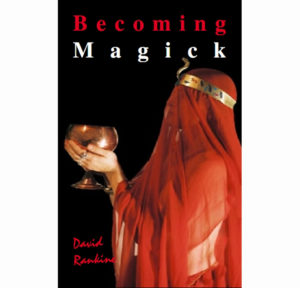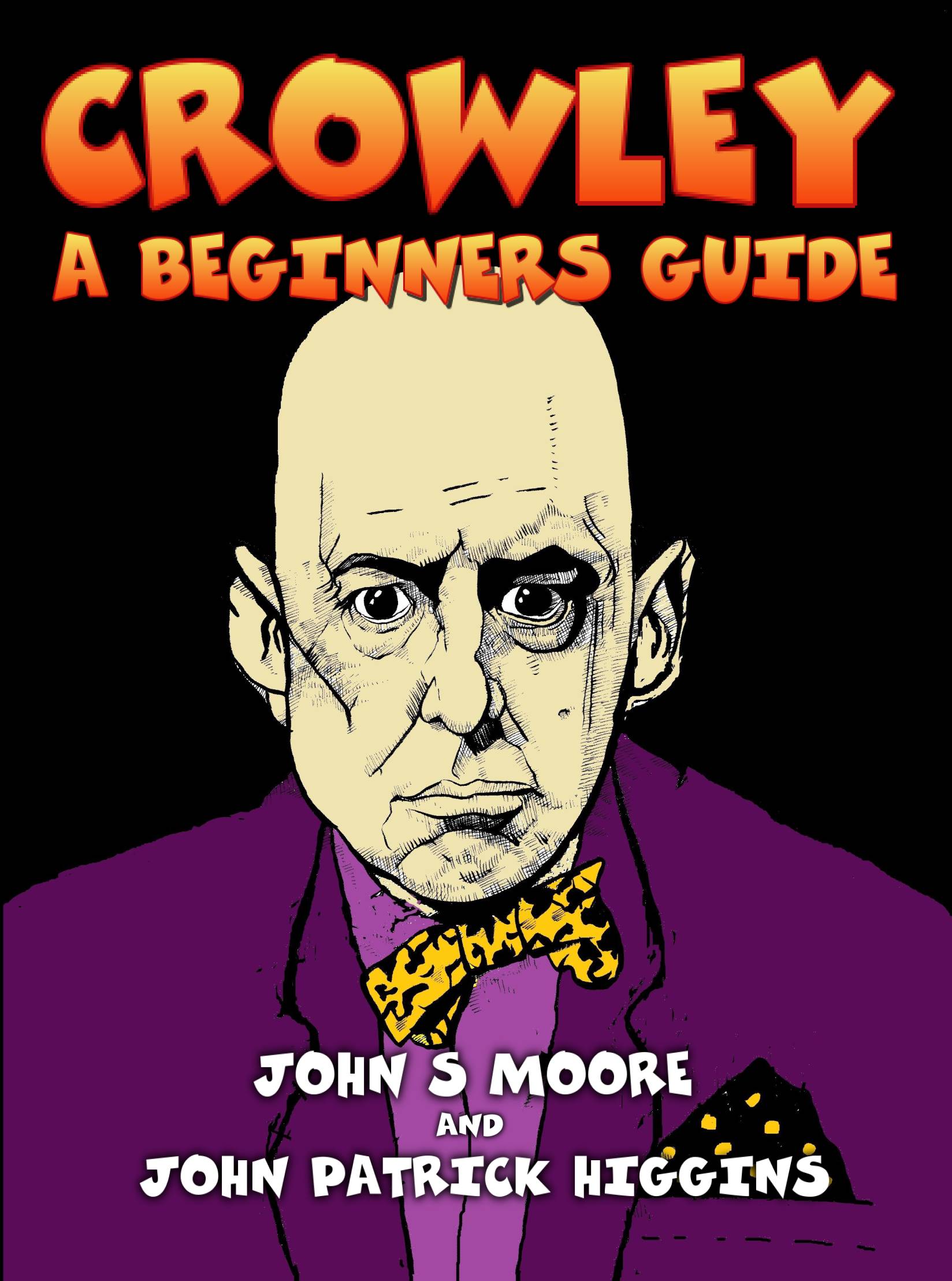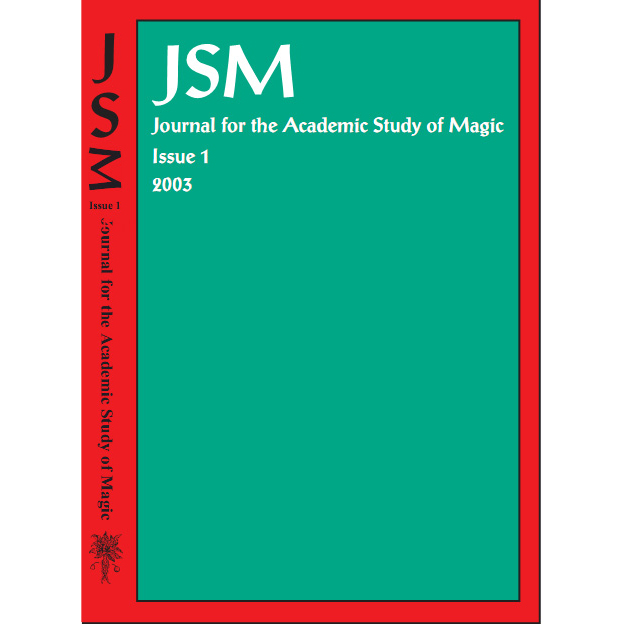New & Revised Magicks for the New Aeon
David Rankine

Becoming Magick / UK / £15.00+p&p
Becoming Magick / USA / US $22+P&P
Becoming Magick
New & Revised Magicks for the New Aeon
David Rankine
Format: Softcover
ISBN:
£15.00 /US $22
Subjects: Magick/Occult
–
Drawing on over twenty years of magickal work in a variety of systems, this book is a forward-looking manual full of new material and techniques created to push the boundaries of contemporary magick. Inspired by the great magickal traditions of past millennia, Becoming Magick presents new techniques of sigilisation and gematria, as well as a new system of energy magick based on the lunar Kalas, and prime Qabalah, a new system of English gematria.
REVIEWS
In the acknowledgements to this book David Rankine writes:
‘Ian Read, for being the first person to publish my writings as Jack Dracula in Chaos International.‘It is, therefore, the least we can do to have a gander at Becoming Magick and give you our considered opinion thereon. The system put forward here has something for everyone, all explained in the free and easy way that is one of the few good things about modern literature. The reader is guided through anything and (just about) everything from Maat to Angle and Mantra Webs and from Qabalah to Grant’s take on the Kalas, and it all somehow adds to- gether to make a great whole. There is a fair bit of number working in this book but anyone but the worst idiot (surely not present in the occult world?) should be able to follow this. This book is of particular use to Chaos Magicians because it is formed from ideas and techniques lifted from so many diverse systems. Definitely worth buying.’
– Frank Erpel, Chaos International, 26
‘The author of this new work exploring “magicks for the New Aeon”, is well known on the esoteric scene in Wales and London for his lectures and workshops. He has also been involved with a wide variety of magical groups and he draws on this experience to convey the essence of practical magick in simple terms. The book presents new techniques of visualisation and germatria, as well as a new system of magical working based on lunar symbolism and the Cabbala.’- The Cauldron
‘This book is a wonderful propellant for those who wish to bring that magic with a K into their lives. Having the benefit of knowledge of many systems of magic, from kundalini to kameas and kalas to qabalah, Mr Rankine delivers hard and fast ideas regarding these and a myriad of other subjects…An instructive book, especially for those with pre-knowledge of the author’s chosen subject matter.’- Hyena, Witchcraft & Wicca Magazine, Beltane to Lammas 2005
MORE REVIEWS
‘David Rankine has been practicing magick for 25 years. His book Magick Without Peers was the handbook for his correspondence course on Progressive Witchcraft, a hands on primer. This book continues in the same vein, giving you some further study in some material that Mr. Rankine has developed over and above conventional practices. This book assumes you have some grounding in basic magical practices. It would be a good to have some idea of what the Hebrew alphabet has to do with the Qabalah, and how it works with gematria, or better yet, have an idea of what gematria is. It would also be a good idea to know a little about thought forms, a touch of Magic Squares, advanced mantras, and maybe some basics in the 9 Gates.
From these foundations David Rankine takes us a step further, exposing us to some out of the box thinking on these particular essentials to basic magic practice, and gives us something to ponder and possibly incorporate into our own practices. He also includes some “found” techniques he has devised from his own ponderings and practices, and he explains those rather well. Some topics of interest include The Prime Qabalah, The Kalas, The Mantra of Becoming, Magickal Ingestion, Magick Squares and so much more. There is much to digest here, and I am going to give but a brief overview. The Prime Qabalah is a look at a variation of gematria (Hebrew Numerology) applied to the English alphabet and using the 26 prime numbers. Mr. Rankine has some interesting results, which give one cause for reflection. Well worth checking out.
The Kalas chapter is interesting, being based on the concept given by Kenneth Grant. Mr. Rankine has developed his own 16 Kalas (five elements and eleven Astrological Planets) and gives all the properties and attributions of each. From his explanation of what the Kalas are (cycles of energy), to the explanation of each Kala, he presents us with an extraordinary new working that many will find fascinating. If you work with Kalas, you will want to check this section out. The Mantra of Becoming is a discovery of Mr. Rankine, incorporating a root mantra of Kia with some variations that progress on the magical “ia” and incorporates the next four Hebrew letters: L, M, N, and S. This revelation yields some very interesting analysis from the gematria aspect of the mantra, and Mr. Rankine goes a bit further to show the relationships suggested by the gematria analysis and gives us a very interesting mantra to work with.
Magickal Ingestion I found so basic that I wondered why someone else had not thought of it before. In Egyptian, Heka is magic. It is the spoken word that makes magic manifest. The ancient Egyptians would take a spell, and write it on a piece of papyrus and dissolve it in beer and drink it, imbibing the spell as part of themselves as well as being a working.
Bringing that into the present, writing our working, or sigal, or spell on food, writing our intent on a magical cookie, writing blessings on the cakes for ritual with various methods would be an excellent idea to bring the magic and the magician closer together, as suggested by Mr. Rankine. He gives some ideas, some uses and a whole new insight into “you are what you eat”. Much to ponder here and discover.
Magick Squares are the basis for much of our magical workings, be it talismans or creating sigals for personal work. The squares are based on the astrological information from hundreds of years ago and include Saturn, Jupiter, Mars, Sun, Venus, Mercury and the moon. However, since the discovery of Uranus, Neptune and Pluto, there has been no one who has updated these squares. Mr. Rankine gives us his version of the squares using the Prime Qabalah and also includes Earth, which seems to have been neglected by the astrologers of the past.
Again, more interesting material to ponder over, chew up, and possibly incorporate into our own magical workings. Note that if you do not understand the material discussed here, it is because this book is not a basic primer, and you are not at fault. This can get to be very deep, covering some more advanced material and concepts that knowledgeable practitioners will understand. I found this to be refreshing, and a bit challenging, as there was material here that went beyond my own basic knowledge.
I love a book that can teach me something new, or send me out looking for the basics so I can kick my own working knowledge up a notch. Mr. Rankine did an excellent job of explaining the concepts he is suggesting, and includes illustrations for much of what he discusses, and but for a few places where I had no working knowledge of what he was discussing, I did follow most of what he wrote. And after a bit of backtracking and research, the material I was not familiar with did fall into place.
The mark of a good teacher is his ability to make the unfamiliar understandable, and Mr. Rankine succeeded. If you are looking for new material for your own practice, if you are looking at what other working magicians are doing and are interested in some new concepts and ideas. If you want to challenge yourself with some new aspects to the magickal practices, then this book will definitely give you something to chew on. Again, this is not a magic 101 book, but is intended for those who have gone beyond that. This book is a wondrous look at another man’s discoveries and practices.’
– Boudica, The Wiccan/Pagan Times
—
David Rankine – Magician, Esoteric Author & Researcher and a leading authority on grimoires. davidrankine.wordpress.com




